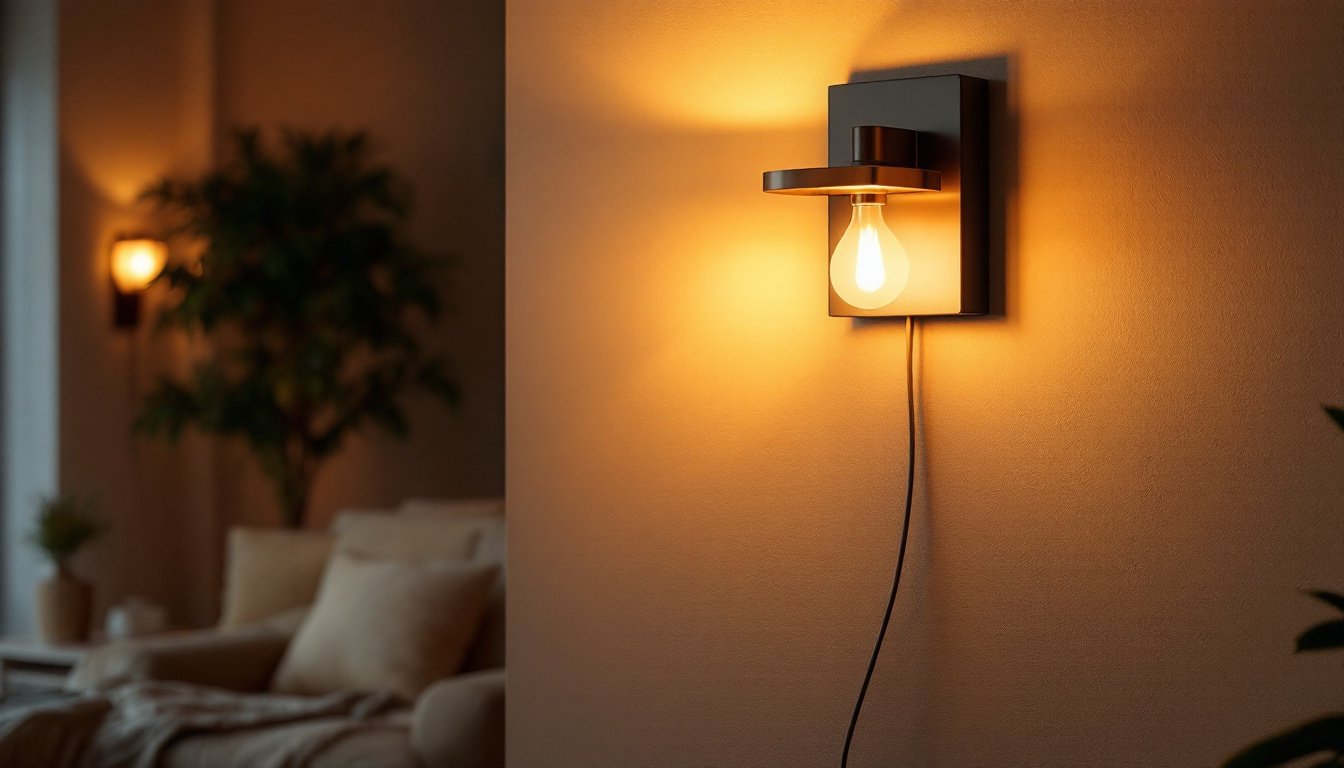
As the demand for efficient and sustainable lighting solutions continues to grow, LED warehouse lighting has emerged as a key area of focus for lighting contractors. Understanding the nuances of LED technology, its benefits, and the best approaches to implementation can significantly enhance a contractor’s service offerings. This article delves into various strategies and considerations that lighting contractors should adopt when working with LED warehouse lighting.
LED, or Light Emitting Diode, technology has revolutionized the way lighting is approached in various settings, including warehouses. Unlike traditional lighting options, LEDs provide a range of advantages that make them particularly suitable for large spaces. Their energy efficiency, longevity, and low heat output are just a few of the factors that make them an attractive choice for warehouse applications. Furthermore, the compact size of LEDs allows for versatile installation options, enabling warehouses to optimize their lighting layouts for maximum effectiveness.
One of the most compelling reasons to switch to LED lighting is its energy efficiency. LEDs consume significantly less power compared to incandescent and fluorescent lights. This reduction in energy consumption not only lowers electricity bills but also contributes to a smaller carbon footprint, aligning with the growing emphasis on sustainability in the industry. Additionally, many LED fixtures are designed with smart technology that allows for dimming and motion sensing, further enhancing energy savings by ensuring lights are only on when needed, which is particularly advantageous in large, often unoccupied spaces.
LED lights boast an impressive lifespan, often exceeding 25,000 hours of use. This longevity translates into reduced maintenance costs and less frequent replacements, which is particularly beneficial in expansive warehouse settings. Contractors can highlight this advantage to clients, emphasizing the long-term savings associated with LED installations. Moreover, the durability of LEDs means they are less prone to breakage compared to traditional bulbs, making them ideal for environments where equipment may be moved frequently or where dust and debris are common. This resilience ensures that warehouses can maintain consistent lighting without the disruptions caused by frequent bulb changes.
The quality of light produced by LEDs is another significant factor to consider. LEDs offer a variety of color temperatures and can provide excellent color rendering, which is essential in environments where accurate color perception is crucial. This quality enhances visibility and can improve overall safety in warehouse operations. Furthermore, the ability to customize lighting setups with LEDs allows for tailored solutions that can enhance productivity by illuminating specific areas more brightly, such as workstations or loading docks, while maintaining softer lighting in less critical areas. This strategic lighting approach not only boosts operational efficiency but also contributes to a more pleasant working environment for employees.
Creating a successful LED lighting plan for a warehouse involves careful consideration of various factors, including layout, purpose, and specific lighting needs. A well-thought-out design not only maximizes efficiency but also enhances the functionality of the space.
Every warehouse is unique, and understanding its layout is critical to developing an effective lighting plan. Factors such as shelving height, aisle width, and the presence of machinery all influence how light will be distributed throughout the space. A thorough assessment ensures that light reaches all areas adequately, reducing shadows and dark spots that can hinder operations.
Different tasks within a warehouse may require varying levels of illumination. For instance, areas designated for picking and packing may need brighter lighting compared to storage areas. Contractors should work closely with clients to determine the appropriate lighting levels for each section of the warehouse, ensuring that the lighting meets both safety and operational needs.
Integrating smart technology into LED lighting systems can further enhance efficiency and control. Smart lighting solutions allow for features such as motion sensors, dimming capabilities, and remote management. These technologies not only optimize energy use but also provide flexibility, allowing warehouse managers to adjust lighting based on real-time needs.
Once a lighting plan is in place, the next step is installation. Adhering to best practices during this phase is crucial to ensure that the LED lighting system functions optimally and meets the expectations set during the design phase.
Choosing the right fixtures is essential for effective LED lighting installation. Contractors should consider factors such as the type of LED bulb, fixture design, and compatibility with existing systems. Selecting high-quality fixtures that are specifically designed for warehouse environments can enhance performance and longevity.
The placement of lighting fixtures plays a significant role in achieving uniform illumination. Fixtures should be strategically positioned to minimize shadows and ensure that light reaches all necessary areas. This may involve using a combination of overhead lighting and task lighting to create a balanced lighting scheme.
Lighting contractors must be aware of and comply with local regulations and standards regarding warehouse lighting. This includes adhering to guidelines set forth by organizations such as the Illuminating Engineering Society (IES) and local building codes. Ensuring compliance not only enhances safety but also protects contractors from potential liabilities.
While LED lighting systems are known for their longevity and low maintenance requirements, regular upkeep is still essential to ensure optimal performance. Establishing a maintenance plan can help contractors provide ongoing value to their clients.
Conducting regular inspections of the lighting system is crucial for identifying potential issues before they escalate. This includes checking for any signs of wear, ensuring that fixtures are clean, and verifying that all components are functioning correctly. Proactive maintenance can extend the life of the lighting system and prevent costly downtime.
The field of lighting technology is continually evolving. Staying informed about the latest advancements in LED technology, smart systems, and energy-saving solutions can help contractors provide the best service to their clients. Offering upgrades or retrofits can be an additional revenue stream while enhancing the overall efficiency of the lighting system.
Educating clients about the benefits of LED lighting and proper maintenance practices is vital. Providing training on how to use smart lighting systems and explaining the importance of regular inspections can empower clients to take an active role in maintaining their lighting systems. This not only fosters a positive relationship but also positions contractors as trusted advisors.
Examining successful case studies can provide valuable insights into effective strategies for LED warehouse lighting. These examples highlight the benefits of LED technology and showcase innovative approaches that contractors can adopt in their projects.
In a recent project involving a large distribution center, a comprehensive LED lighting system was implemented to address the challenges of high energy costs and inadequate illumination. The contractor conducted a thorough assessment of the facility, leading to a tailored lighting plan that included high-bay LED fixtures and smart controls.
The results were impressive: energy consumption decreased by over 60%, and employee productivity improved due to enhanced visibility. The client reported significant savings on their energy bills, and the installation paid for itself within a short period.
Another successful implementation occurred in a cold storage warehouse, where maintaining optimal lighting conditions is crucial. The contractor selected LED fixtures specifically designed for low-temperature environments, ensuring that performance would not be compromised.
By integrating motion sensors and dimming features, the contractor was able to optimize energy usage while providing adequate lighting for staff. The client appreciated the reduction in energy costs and the improved safety for employees working in the cold storage areas.
As technology continues to advance, the future of LED warehouse lighting holds exciting possibilities. Lighting contractors should stay informed about emerging trends that could impact their services and offerings.
The integration of LED lighting with the Internet of Things (IoT) is one of the most significant trends on the horizon. IoT-enabled lighting systems can provide real-time data on energy usage, occupancy levels, and maintenance needs. This data-driven approach allows for more efficient management of lighting systems and can lead to further energy savings.
Human-centric lighting, which focuses on creating lighting environments that support human health and well-being, is gaining traction in various sectors, including warehouses. By adjusting color temperatures and brightness levels based on the time of day, contractors can create more comfortable and productive work environments for employees.
As sustainability continues to be a priority for businesses, LED lighting will play a critical role in achieving energy efficiency goals. Contractors should be prepared to offer solutions that align with clients’ sustainability initiatives, including the use of renewable energy sources and environmentally friendly materials.
LED warehouse lighting presents a wealth of opportunities for lighting contractors to enhance their service offerings and meet the evolving needs of clients. By understanding the technology, designing effective lighting plans, adhering to best practices during installation, and staying informed about future trends, contractors can position themselves as leaders in the industry.
As the landscape of warehouse lighting continues to evolve, embracing LED technology and its associated benefits will not only improve efficiency and sustainability but also contribute to the overall success of warehouse operations. By adopting a proactive and informed approach, lighting contractors can ensure that they remain at the forefront of this dynamic field.
Ready to take your LED warehouse lighting projects to the next level? At LumenWholesale, we provide lighting contractors like you with the highest quality, spec-grade lighting products at prices that can’t be beaten. Say goodbye to unnecessary markups and hello to a vast selection of reliable lighting solutions that meet the most rigorous industry standards. With free shipping on bulk orders, you can stock up on premium lighting without worrying about hidden costs. Elevate your service offerings and delight your clients with the efficiency and sustainability of LED technology. Choose LumenWholesale for the perfect fusion of quality, value, and convenience. Wholesale Lighting at the Best Value is just a click away.

Discover the ultimate guide to indoor sconces, covering everything from design styles and installation tips to choosing the perfect lighting for your space.

Discover the essential checklist for lighting contractors with “Light Bases.” This guide covers crucial steps and considerations to ensure flawless installations, enhance efficiency, and deliver exceptional lighting solutions for any project..

Discover how 8-inch can lights are transforming lighting contractors’ projects with enhanced illumination and design flexibility.

Discover how large wall sconces can transform your lighting projects by enhancing efficiency and aesthetics.